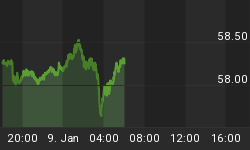This week we can repeat verbatim our column from last week, and just update the charts. But we'll add a few new comments nevertheless. The one big difference from last week is discussed at the end of the article.
The daily Sp500 closed the week at a very important juncture where several support levels meet:

The similarities with the April-May consolidation and subsequent decline are hard to ignore. A breakdown from current levels will put the recent upswing in jeopardy. Should the SPX break below the September - October lows, support will likely come in at the 1400 - 1407 level, which is the next confluence zone as defined by Fibonacci, Gann and Hurst methods:

As shown in the chart below, stocks have been losing their bullish momentum since the announcement of QE III. As a result, bullish and bearish momentum find themselves at near equilibrium. In the past this has often been followed by a period of choppy trading before either bullish or bearish momentum regains the upper hand.

The one big difference from last week, however, is that market breadth is topping out, and the next cyclical downswing of this indicator should exert more pressure on the market:

We've mentioned Election Year seasonality several times before, and here's another chart update. This time we include both the bullish and the bearish outlook. Interestingly, they both point to higher prices by the end of the year:

With the release of OT Seasonality, now everybody can check on the seasonal trends of their favorite stocks, indices, sectors and mutual funds anytime and from anywhere.
















